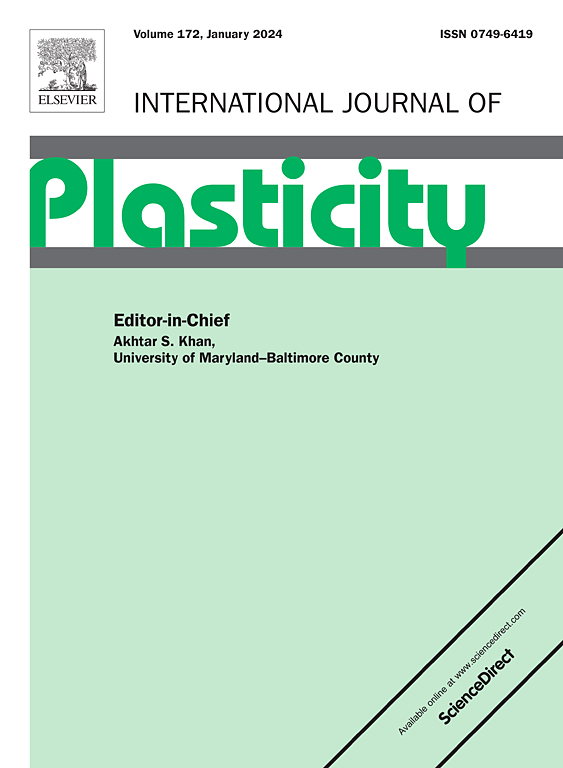Controlling behaviour of constitutive models for rocks using energy dissipations
IF 12.8
1区 材料科学
Q1 ENGINEERING, MECHANICAL
引用次数: 0
Abstract
The behaviour of rocks and other similar geomaterials is governed by different underling dissipative mechanisms that can be represented by damage and plastic strains in continuum constitutive modelling. The explicit links between these dissipative mechanisms and constitutive behaviour are established in this study in a generic thermodynamics-based framework. The key feature of this proposed framework and derived damage-plasticity models is the capability to control the constitutive behaviour through varying the contributions of different dissipative mechanisms to the total dissipation budget. Particularly, three fractions of the total dissipation budget related to damage, plastic volumetric and shear dissipations are introduced to control the constitutive behaviour through the evolution of damage variable and plastic strains, respectively. The examples provided show the performance and promising features of the proposed framework.
基于能量耗散的岩石本构模型控制行为
岩石和其他类似岩土材料的行为是由不同的底层耗散机制所控制的,这些耗散机制可以用连续本构模型中的损伤和塑性应变来表示。这些耗散机制和本构行为之间的明确联系在本研究中建立在一个通用的基于热力学的框架。该框架及其衍生的损伤塑性模型的关键特征是能够通过改变不同耗散机制对总耗散预算的贡献来控制本构行为。特别地,引入了与损伤、塑性体积和剪切耗散相关的总耗散预算的三个部分,分别通过损伤变量和塑性应变的演变来控制本构行为。所提供的示例显示了所提出框架的性能和有前途的特点。
本文章由计算机程序翻译,如有差异,请以英文原文为准。
求助全文
约1分钟内获得全文
求助全文
来源期刊

International Journal of Plasticity
工程技术-材料科学:综合
CiteScore
15.30
自引率
26.50%
发文量
256
审稿时长
46 days
期刊介绍:
International Journal of Plasticity aims to present original research encompassing all facets of plastic deformation, damage, and fracture behavior in both isotropic and anisotropic solids. This includes exploring the thermodynamics of plasticity and fracture, continuum theory, and macroscopic as well as microscopic phenomena.
Topics of interest span the plastic behavior of single crystals and polycrystalline metals, ceramics, rocks, soils, composites, nanocrystalline and microelectronics materials, shape memory alloys, ferroelectric ceramics, thin films, and polymers. Additionally, the journal covers plasticity aspects of failure and fracture mechanics. Contributions involving significant experimental, numerical, or theoretical advancements that enhance the understanding of the plastic behavior of solids are particularly valued. Papers addressing the modeling of finite nonlinear elastic deformation, bearing similarities to the modeling of plastic deformation, are also welcomed.
 求助内容:
求助内容: 应助结果提醒方式:
应助结果提醒方式:


